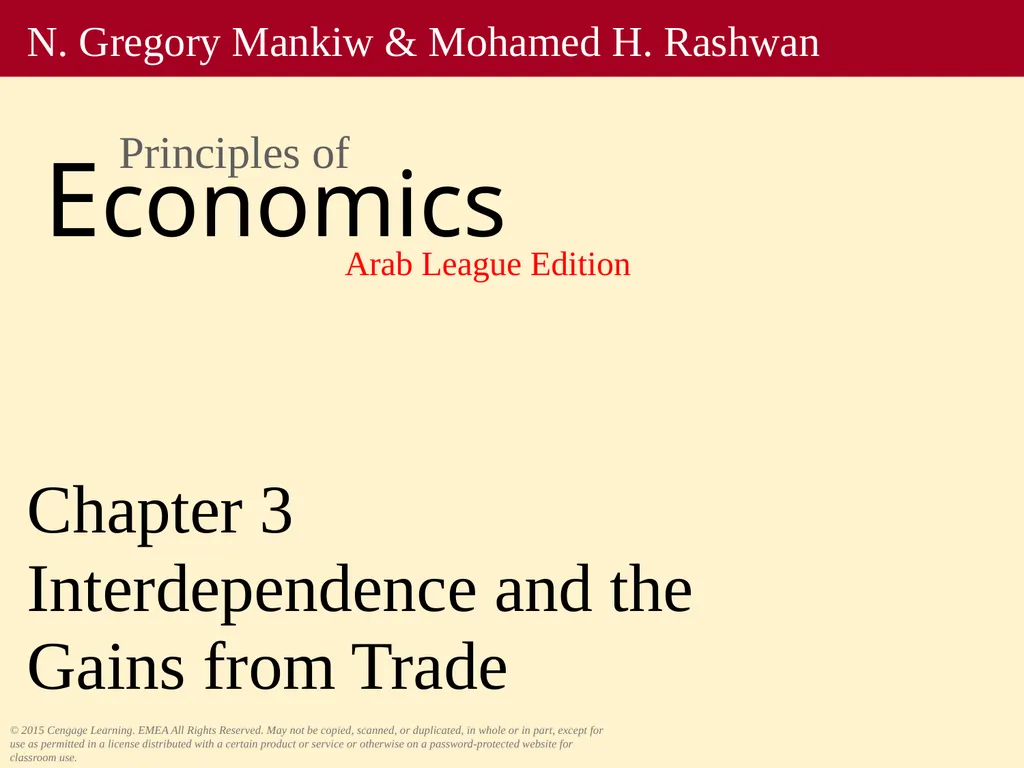N. Gregory Mankiw & Mohamed H. Rashwan In this
Author : pamella-moone | Published Date : 2025-11-08
Description: N Gregory Mankiw Mohamed H Rashwan In this chapter look for the answers to these questions Why do peopleand nationschoose to be economically interdependent How can trade make everyone better off What is absolute advantage What is
Presentation Embed Code
Download Presentation
Download
Presentation The PPT/PDF document
"N. Gregory Mankiw & Mohamed H. Rashwan In this" is the property of its rightful owner.
Permission is granted to download and print the materials on this website for personal, non-commercial use only,
and to display it on your personal computer provided you do not modify the materials and that you retain all
copyright notices contained in the materials. By downloading content from our website, you accept the terms of
this agreement.
Transcript:N. Gregory Mankiw & Mohamed H. Rashwan In this:
N. Gregory Mankiw & Mohamed H. Rashwan In this chapter, look for the answers to these questions: Why do people—and nations—choose to be economically interdependent? How can trade make everyone better off? What is absolute advantage? What is comparative advantage? How are these concepts similar? How are they different? Interdependence Every day you rely on many people from around the world, most of whom you’ve never met, to provide you with the goods and services you enjoy. 0 coffee from Kenya Cotton shirt from China cell phone from Taiwan Interdependence One of the Ten Principles from Chapter 1: Trade can make everyone better off. We now learn why people—and nations—choose to be interdependent, and how they can gain from trade. Our Example Two countries: Saudi Arabia and Japan Two goods: computers and wheat One resource: labor, measured in hours We will look at how much of both goods each country produces and consumes if the country chooses to be self-sufficient if it trades with the other country 0 © 2012 Cengage Learning. All Rights Reserved. May not be copied, scanned, or duplicated, in whole or in part, except for use as permitted in a license distributed with a certain product or service or otherwise on a password-protected website for classroom use. 4 Production Possibilities in Saudi Arabia Saudi Arabia has 50,000 hours of labor available for production, per month. Producing one computer requires 100 hours of labor. Producing one ton of wheat requires 10 hours of labor. 0 Saudi Arabia PPF 0 © 2012 Cengage Learning. All Rights Reserved. May not be copied, scanned, or duplicated, in whole or in part, except for use as permitted in a license distributed with a certain product or service or otherwise on a password-protected website for classroom use. 6 Saudi Arabia Without Trade Suppose the Saudi Arabia uses half its labor to produce each of the two goods. 0 Then it will produce and consume 250 computers and 2500 tons of wheat. © 2012 Cengage Learning. All Rights Reserved. May not be copied, scanned, or duplicated, in whole or in part, except for use as permitted in a license distributed with a certain product or service or otherwise on a password-protected website for classroom use. 7 ACTIVE LEARNING 1 Derive Japan’s PPF Use the following information to draw Japan’s PPF. Japan has 30,000 hours of labor available for production, per month. Producing one













